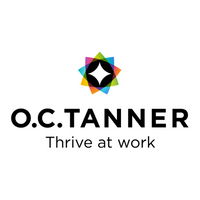7 tips for ensuring deskless employees get the recognition they deserve
Deskless workers - from emergency workers to retail assistants – are often at the back of the queue when it comes to being rewarded for a job well done.
Only half of deskless workers have received recognition from leaders, peers, or their organisation in the past month, according to O.C. Tanner’s 2024 Global Culture Report. Of those who did, most say that it came across as inauthentic and insincere.
The effects of this are considerable, with half of deskless workers feeling expendable at work and becoming increasingly disengaged with their employer. Ultimately, this leads to high staff turnover and poor productivity. Ensuring deskless workers are regularly made to feel valued and appreciated is therefore crucial. But recognition strategies for deskless workers will require a different approach to that of desk-based workers.
Here are some key factors to consider.
1. Managers must get to know deskless workers
Just 46% of deskless workers say they have leaders who understand how they want to be recognised. This is indicative of the poor relationships many managers have with their deskless teams.
To ensure every individual receives recognition in a way that best suits them and is given in a meaningful way, managers must take the time to get to know their staff. When deskless workers are understood by leaders, including how they prefer to be recognised and appreciated, there’s a 350% greater chance they’ll choose to stay with their employer another year.
They are also 378% more likely to deliver great work and 258% more likely to feel a sense of fulfilment in their jobs.
2. Ensure fair and equitable recognition
All too often, desk-based workers get more recognition than their deskless colleagues as they are better connected. They may also receive superior/more lavish gifts, giving the impression they are more valued.
However, recognition should be fair across the whole organisation, with workers from all parts of the business given the same opportunities to be recognised. The awards must also be equitable for all.
3. Give access to IT and recognition tools
Only 10% of deskless employees feel they have access to the tools, technology, and opportunities necessary to connect and advance at work. Asking employees about the specific obstacles to connection they face is key to overcoming these challenges. Plus, all deskless workers must be given access to mobile apps and technologies, allowing them to keep connected whether they’re in-store, on-site or on the road.
4. Use a range of offline communications and recognition tactics
Even with mobile IT solutions in place, deskless workers are never going to be as connected as desk-based workers. It’s therefore important to use a range of offline channels to reach and recognise them.
Signage and even murals in breakout areas can help to communicate values and purpose, for example. Newsletters, bulletins and recognition certificates pinned to noticeboards are also good for communicating and recognising others as well as simple but meaningful handwritten ‘thank you’ notes
5. Provide a wide variety of awards
Tie the recognition giving to tangible awards, allowing workers to choose items that benefit them the most. And don’t forget the power of symbolic awards for connecting workers to the company’s purpose, especially when celebrating career milestones.
6. Make the moment meaningful and public
Making the giving of recognition a sincere and memorable experience should be an inherent part of any staff appreciation strategy – both for desk-based and deskless workers. To give recognition effectively, managers must say what the individual has specifically done that’s worthy of recognition and how this links with the company’s values. Giving the recognition in front of others, including leaders and peers, also elevates its worth, helping the recipient to feel valued and important.
7. Encourage peer-to-peer recognition
Encouraging the giving of peer-to-peer recognition can embed appreciation into the organisational culture. And although appreciation can be easily given using recognition technology, this must also be supported with offline methods such as recognition suggestion boxes in break-out areas. These would allow deskless workers to use paper forms to spotlight their colleagues for when they’ve gone ‘bove and beyond.
Deskless workers mustn’t be forgotten in the giving of recognition. Their contributions are vital and so they must be made to feel treasured rather than dispensable. And the benefits of doing this? Employee engagement is 674% more likely, and the odds of great work is increased by 592%. For the greatest chance of success, just remember to make the recognition inclusive, equitable and accessible for all.
Supplied by REBA Associate Member, O. C. Tanner
Giving teams the integrated tools they need when, where and how they need them.








